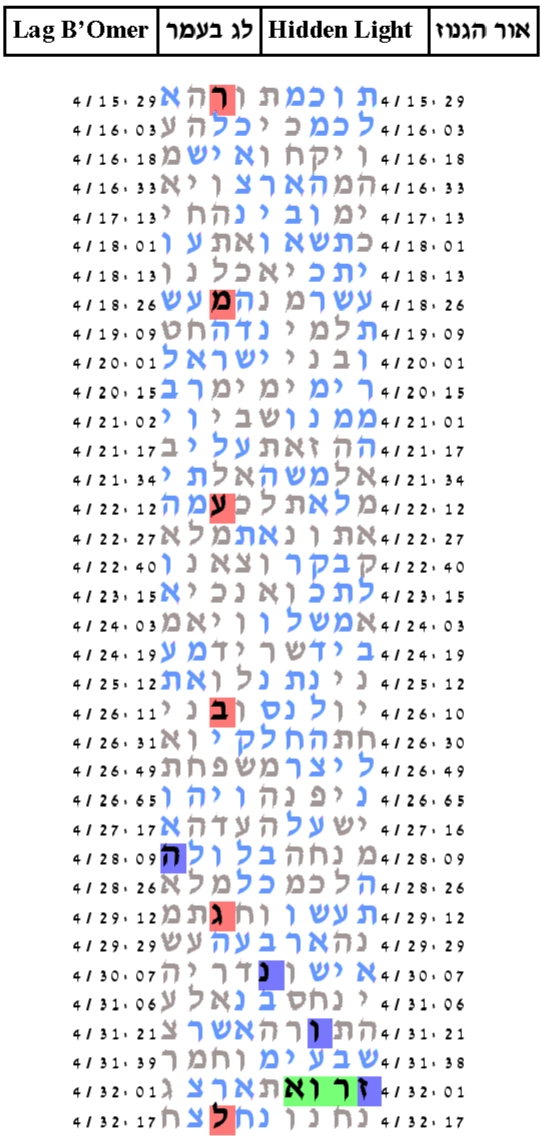| Home» Hidden Light |
Hidden Light - Lag B'Omer
The hiding of the Supernal Light,לגנוז האור, refers the hidding of the light that God separated from the darkness on the first day of Creation, long before the sun, moon and stars were created on the fourth day. Jastrow explains the root גנז as meaning to cut off, set asid to suppress or prohibit, to disappear, be hidden or cover up The Light is hidden because it cannot be used for ordinary profane purposes. It can only be used for holy purposes.
On the day of his own passing, the 18th of Iyar, which is the 33rd day of the counting of the Omer, Lag B'Omer, Rabbi Shimon bar Yochai, the Rashbi, revealed to his son, R' Elazar, more of the mystical teachings than throughout his entire lifetime! The son, R' Elazar, was instructed by his father not to annually observe the yahrzeit as a quasi day of mourning (as was customary), but rather as a festive occasion celebrating the release of the hidden light, האור גנוז.
Like the light of the sun that reaches into every corner of the world and illuminates it, so is the light of the Tzaddik, Rabbi Shimon Bar Yochai. The Talmud teaches that
Tzaddikim are greater after their passing than when they were alive. (Talmud Berahot 18a)
Thus the light of Rabbi Shimon Bar Yochai now reaches into the furthest and lowest where a Jewish soul can be found. This is the mark of a Tzaddik, the greater he is, more he is able to love even a depraved and wretched soul.
To the Tziyun of Rabbi Shimon Bar Yochai, stream hundreds of thousands of people from all walks of life. On Lag B'Omer, when his light is shining at its fullest, everybody wants to be close. That is why we light lamps and bonfires. The bonfires symbolize the light of the hidden wisdom that Rabbi Shimon Bar Yochai revealed on Lag B'Omer.
This motivates to do two studies. The first using the key word Lag B'Omer against Hidden Light and the second using the key word Lag B'Omer against Rashbi or The Rashbi. In the first study, we will try each key word with and without the ה, which is the definite article. The four sub-experiments produced p-values of 206.5/1,000, 55.5/1,000, 20.5/1,000 and 267/1,000. Using our standard protocol which tests the Null hypothesis of no Torah code effect against the alternative that one of the four key word pairs is encoded, we find that the probability that a text from the ELS random placement text population would produce as good a combined result as the Torah text to be about 69/1,000. Since two of the combinations produced results with p-values less than .055, the combined p-value produced by this protocol is actually too high, because the alternative we specified was that only one combination was encoded, rather than two. We show the two most significant tables below.



 Documentaries and Tutorials
Documentaries and Tutorials